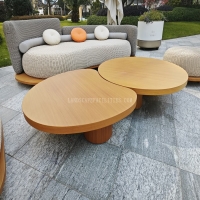Welcome to the website for landscape facilities products and knowledge.
How do manufacturers test the slip resistance of seat surfaces in landscape chairs?
Manufacturers employ rigorous methods to ensure the slip resistance of seat surfaces in landscape chairs, prioritizing user safety and durability. One common approach involves measuring the coefficient of friction (COF) using specialized devices like tribometers or slip meters. These tools simulate real-world conditions by applying controlled force to the seat surface and calculating its resistance to slipping.
Industry standards, such as ASTM F2913 for walkway safety, are often adapted for seating surfaces. Tests may include wet and dry conditions to account for environmental factors like rain or humidity. Some manufacturers also conduct incline tests, gradually tilting the chair until slippage occurs to determine the critical angle of slip resistance.
Advanced materials like textured polymers or rubberized coatings are frequently tested for their anti-slip properties. Computer simulations and robotic testing may supplement physical trials for comprehensive data. Results help designers optimize patterns, textures, and materials to meet safety requirements while maintaining comfort in outdoor furniture.
Related search:

Recommendation
Elliptical metal outdoor table with nested design, resembling wood grain, round table